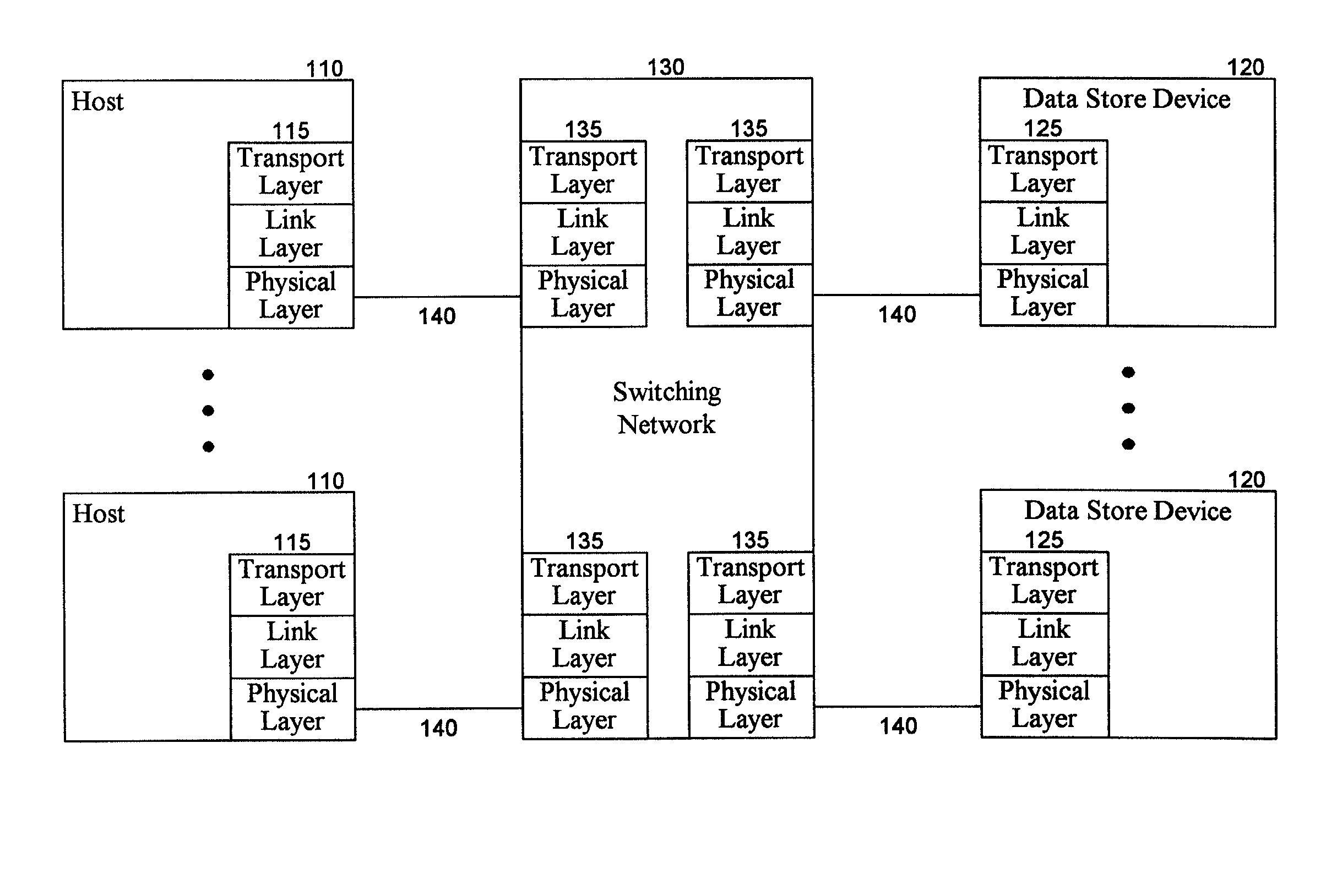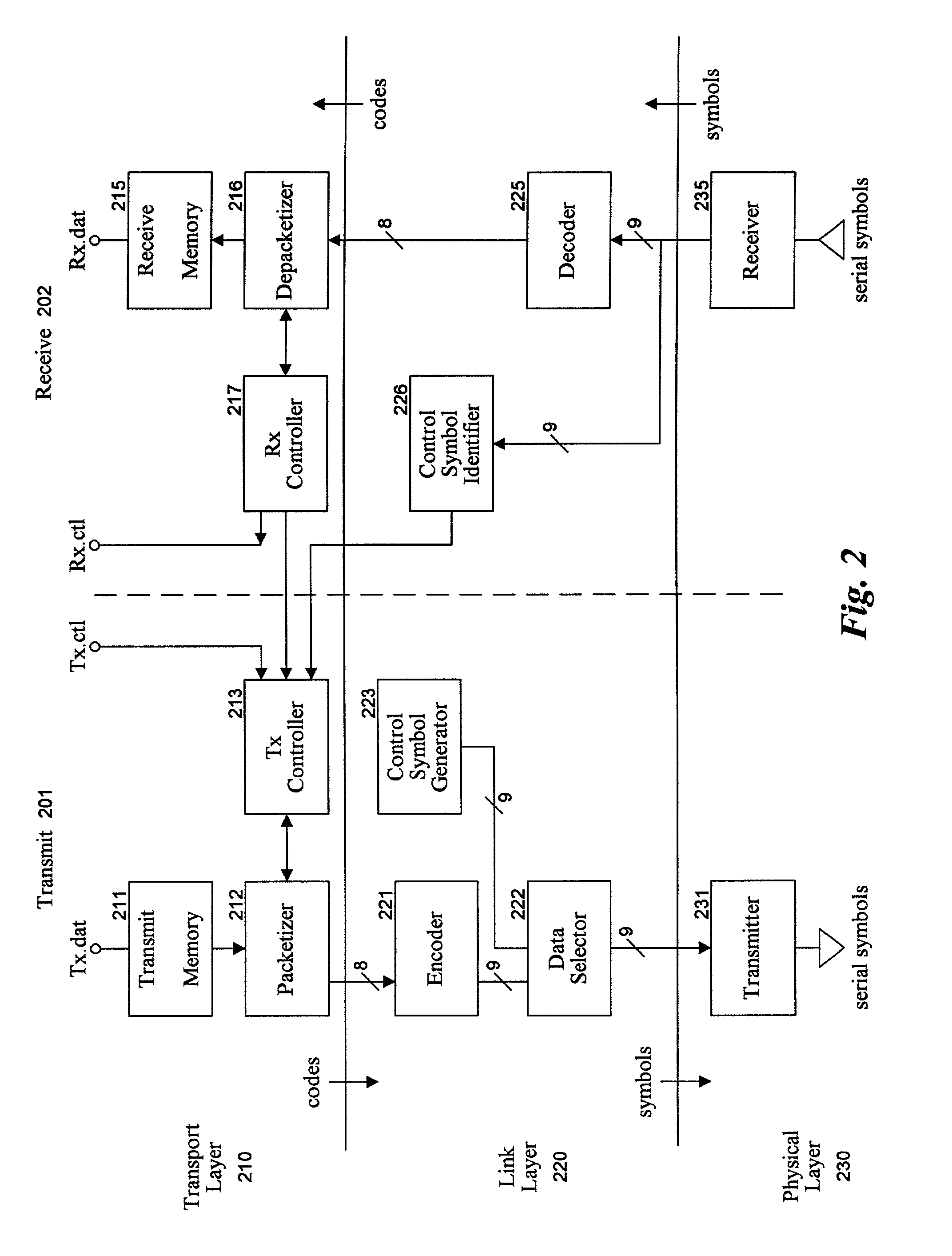Multisection memory bank system
a memory bank and multi-section technology, applied in the field of communication techniques, can solve the problems of large data volumes, slow communication speed between hosts and data store devices, and bottlenecks in many new applications
- Summary
- Abstract
- Description
- Claims
- Application Information
AI Technical Summary
Problems solved by technology
Method used
Image
Examples
Embodiment Construction
[0070]A serial communications architecture for communicating between hosts and data store devices is provided. Aspects of the serial communications architecture, referred to as “Storage Link,” are specially adapted for communications with storage devices, such as disk drives. Other aspects of the serial communications architecture, referred to as “Memory Link,” are specially adapted for communications with memory devices, such as RAM devices. In addition, Storage Link and Memory Link may use an improved plesiosynchronous technique when receiving data transmitted via a serial communications link.
[0071]In one embodiment, the Storage Link architecture is specially adapted to support communications between multiple hosts and storage devices via a switching network, such as a storage area network. The Storage Link architecture specifies various communications techniques that can be combined to reduce the overall cost and increase the overall performance of communications. The Storage Lin...
PUM
 Login to View More
Login to View More Abstract
Description
Claims
Application Information
 Login to View More
Login to View More - R&D
- Intellectual Property
- Life Sciences
- Materials
- Tech Scout
- Unparalleled Data Quality
- Higher Quality Content
- 60% Fewer Hallucinations
Browse by: Latest US Patents, China's latest patents, Technical Efficacy Thesaurus, Application Domain, Technology Topic, Popular Technical Reports.
© 2025 PatSnap. All rights reserved.Legal|Privacy policy|Modern Slavery Act Transparency Statement|Sitemap|About US| Contact US: help@patsnap.com



